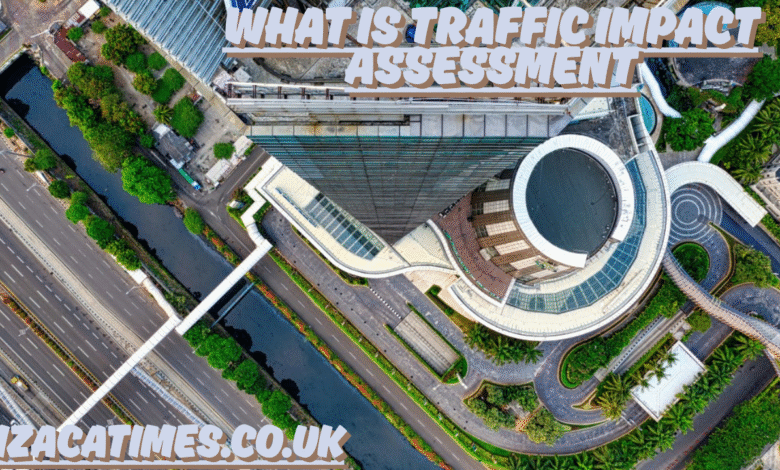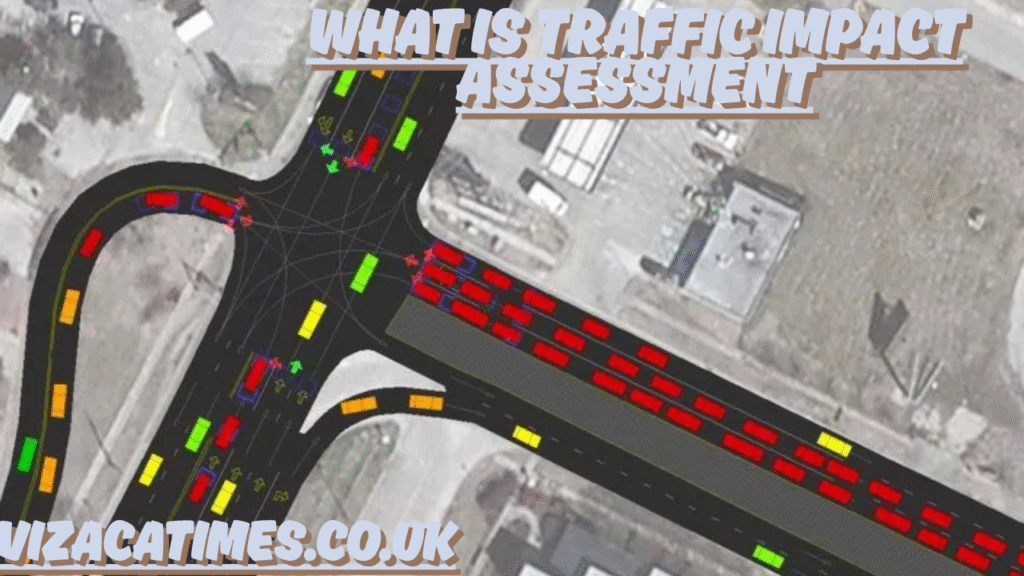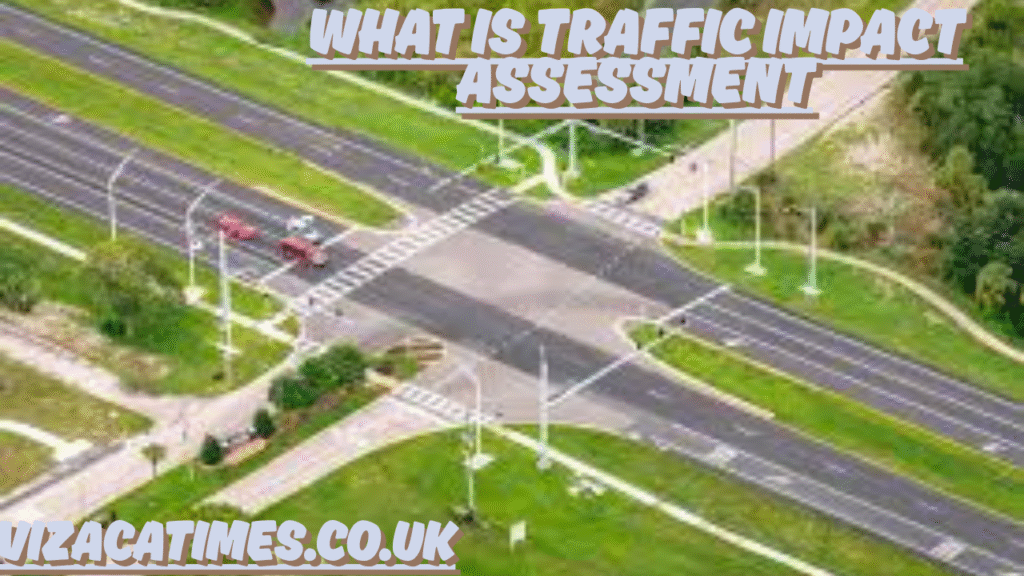What is Traffic Impact Assessment, ??, and Why It Matters in Urban Development

Understanding how transportation systems interact with land use is critical in modern planning. That’s where a Traffic Impact Assessment (TIA) comes in. If you’ve ever asked, “What is traffic impact assessment??”, this detailed guide will walk you through everything you need to know about the term, its importance, methodology, challenges, and frequently asked questions.
Introduction: What is Traffic Impact Assessment, ??

A Traffic Impact Assessment (TIA) is a technical study used to evaluate the effects a new development or land-use change will have on the existing transportation network. The core question at the heart of this process is: Will this proposed development disrupt the existing traffic patterns, and if so, how?
So, what is traffic impact assessment?? Simply put, it’s a forecasting tool used by urban planners, engineers, and government authorities to predict whether a new commercial building, housing complex, shopping center, or industrial facility will create traffic issues—and what solutions can be implemented to manage them.
Why Traffic Impact Assessment Is So Important

At its core, a traffic impact assessment ensures sustainable and safe development. Without it, new projects might overwhelm existing road infrastructure, leading to traffic congestion, safety hazards, and increased pollution. Here’s why it’s essential:
- Mitigation Planning: Helps develop road or signal improvements to mitigate potential congestion.
- Public Safety: Evaluates risks related to increased vehicular and pedestrian traffic.
- Environmental Impact: Reduces the carbon footprint through better planning of travel patterns.
- Policy Compliance: Ensures the project aligns with local, state, or national transportation regulations.
So when someone asks, “what is traffic impact assessment??”, the answer is not just a technical study, but a critical planning mechanism to prevent future problems in urban development.
Key Components of a Traffic Impact Assessment
A typical TIA is detailed and data-driven. It includes multiple components that must be analyzed to make reliable predictions. These often include:
- Existing Conditions Analysis
- Traffic volume data
- Roadway capacity
- Traffic signal timing
- Intersection performance
- Trip Generation and Distribution
- Estimation of trips entering and exiting the proposed development
- Mode of transport—private vehicle, bike, public transport, etc.
- Traffic Assignment
- Predicts which roads will likely carry the generated traffic
- Future Conditions
- Traffic forecasts 5, 10, or 20 years into the future
- Includes background growth and cumulative impacts from nearby developments
- Level of Service (LOS) Analysis
- Grade given to intersections or roadways based on traffic delay and capacity
- Mitigation Strategies
- Proposals to manage traffic impacts such as new signals, road widening, or public transit integration
These components answer the comprehensive question: “What is traffic impact assessment and how can it help city planning?”
When Is a Traffic Impact Assessment Required?
A TIA is typically required when:
- A large-scale residential or commercial project is proposed
- There’s a zoning change or land-use modification
- An expansion of an existing facility is planned
Municipal or regional planning authorities may mandate a TIA based on the projected number of vehicle trips per day or changes in road access.
For example, a new mall expecting thousands of daily visitors would almost certainly trigger a mandatory TIA. So, if you’re thinking again, “what is traffic impact assessment??”, remember—it is often the first line of defense against future traffic nightmares.
Who Conducts a Traffic Impact Assessment?
Typically, TIAs are conducted by qualified traffic engineers or transportation planners, often hired by the developer. However, the assessment must meet the standards set by local or regional transport authorities, who will review and approve it. Sometimes, independent peer reviews are also conducted to ensure objectivity.
Challenges in Traffic Impact Assessment
While TIAs are immensely valuable, they come with challenges:
- Data Limitations: Inaccurate or outdated data can skew projections.
- Assumption-Based Modeling: Predictive models can sometimes miss unexpected human behavior.
- Coordination Issues: Lack of collaboration between developers, engineers, and city planners can create blind spots.
- Changing Technologies: The rise of electric vehicles, ride-sharing, and micro-mobility is shifting traffic patterns in ways that traditional models may not anticipate.
So even though we understand what is traffic impact assessment??, executing it effectively is not always straightforward.
How Traffic Impact Assessments Influence Development
A TIA can significantly influence how and whether a development moves forward. Some common outcomes include:
- Approval with Conditions: Project can proceed if mitigation measures are implemented.
- Modification Requirement: Developer may be required to alter the scope or access points.
- Denial of Proposal: In extreme cases, the traffic impact may be too high to justify development.
Thus, understanding what is traffic impact assessment?? is also understanding how deeply it affects land use, real estate development, and urban growth.
zThe Future of Traffic Impact Assessment
With the advancement of smart mobility, AI, and real-time traffic data, the future of TIA is becoming more dynamic. Future tools may include:
- AI-Powered Simulations
- Integration with Smart City Platforms
- Real-Time Monitoring and Adaptive Modeling
- Sustainability Metrics like Emissions Impact and Modal Shift Analysis
As transportation becomes more connected and data-driven, the scope of what is traffic impact assessment?? will expand beyond just traffic to include social equity, climate resilience, and smart infrastructure.
FAQs About What is Traffic Impact Assessment??
Q1: Is a TIA the same as a transportation study?
Not exactly. A transportation study is broader and may include pedestrian, cycling, and transit analysis. A TIA focuses specifically on vehicle traffic related to a project.
Q2: How long does it take to conduct a TIA?
Depending on the project’s size, it can take several weeks to months. More complex projects require more time due to data collection and modeling.
Q3: Who pays for the traffic impact assessment?
Typically, the project developer bears the cost of the TIA.
Q4: What happens if a project fails the TIA?
The project may be denied, or the developer may need to adjust their proposal to reduce the traffic impact.
Q5: Are public comments considered in TIA reviews?
In many jurisdictions, public input is welcome, especially if the project goes through a planning board or public hearing process.
Final Thoughts: What is Traffic Impact Assessment, ?? – A Necessary Planning Tool
The question of “what is traffic impact assessment??” goes far beyond its textbook definition. It is a fundamental tool for managing growth, ensuring safety, and maintaining the livability of our cities. As we face increasing urbanization, changing mobility patterns, and environmental concerns, TIAs will remain essential for shaping smart and sustainable communities.
Also read : Brandon Richardson Harlington, ?? — A Closer Look into the Life, Work, and Influence



